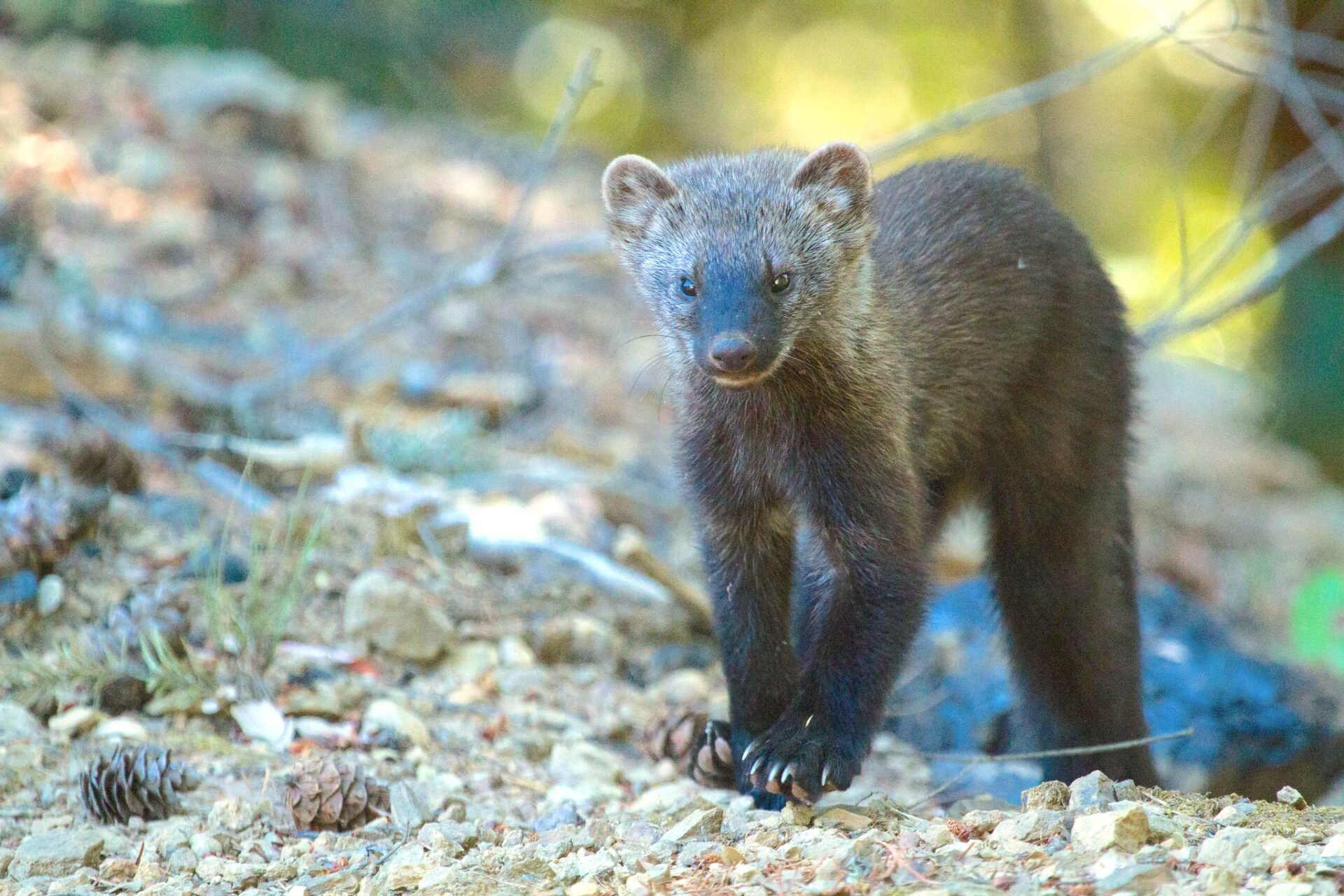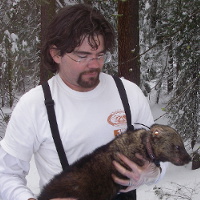The Southern Sierra Nevada Fisher Conservation Assessment and Strategy is multi-agency effort led by CBI to conserve and recover an imperiled population of Pacific fisher (Pekania pennanti) in the southern Sierra Nevada in California. Beginning in 2007, the project was originally a voluntary collaboration amongst agencies sharing an interest in conserving fishers. However, the southern Sierra Nevada “distinct population” of fishers was listed as Endangered under the U.S. Endangered Species Act in 2020, and the project is therefore being restructured to better align with the regulatory process that the U.S. Fish and Wildlife Service (USFWS) must follow to develop an endangered species recovery plan.
Since 2007, CBI has supported the project with scientific analyses and led the effort that produced a comprehensive state-of-the-science assessment in 2015 (Southern Sierra Nevada Fisher Conservation Assessment) and a draft conservation strategy in 2016 (Southern Sierra Nevada Fisher Conservation Strategy). However, dramatic changes in fisher habitat due to historic drought and extreme wildfire impacts, coupled with the listing of the population as Endangered in 2020, have necessitated a complete re-evaluation of the species’ status and new approaches for conserving and recovering the population. In support, the California Department of Fish and Wildlife (CDFW) provided CBI with a “Section 6” grant in June 2024 to guide this next phase of planning.
Previous Southern Sierra Fisher Conservation Assessments and Strategies
The 2015 Southern Sierra Nevada Fisher Conservation Assessment and 2016 Southern Sierra Nevada Fisher Conservation Strategy were completed with funding provided by the Sierra Nevada Conservancy (SNC), USDA Forest Service (Pacific Southwest Region), Resources Legacy Fund, and US Fish and Wildlife Service (USFWS). The Assessment summarized the best available scientific information on fishers and their habitats in the area at that time, including population size, distribution, and trends; ecology; habitat requirements across multiple spatial scales (from the population or landscape scale to the scale of individual denning or resting structures); and threats to fishers and their habitat. The 2016 Conservation Strategy used this information to provide guidance for reducing threats and increasing the quality and resiliency of fisher habitat. It was compatible with diverse agency missions, objectives, and legal requirements, meeting the needs of multiple agencies with an interest in fisher conservation and land management in the Sierra Nevada.
A New Approach
Now, beginning in 2024, CBI will be working with partners to adapt and update the information in all of the previous products with the latest scientific information and context. This current approach will closely align with new USFWS guidance for their statutorily mandated Endangered Species Recovery Planning process. In keeping with this guidance, the project will produce a new Species Status Assessment (SSA), a Recovery Plan, and a Recovery Implementation Strategy (RIS) using the best available scientific information. More information on the USFWS recovery planning process can be found at Recovery Planning Implementation.
For more information about this effort, please contact Wayne Spencer, wdspencer@consbio.org, or Deanne DiPietro deanne.dipietro@consbio.org.






